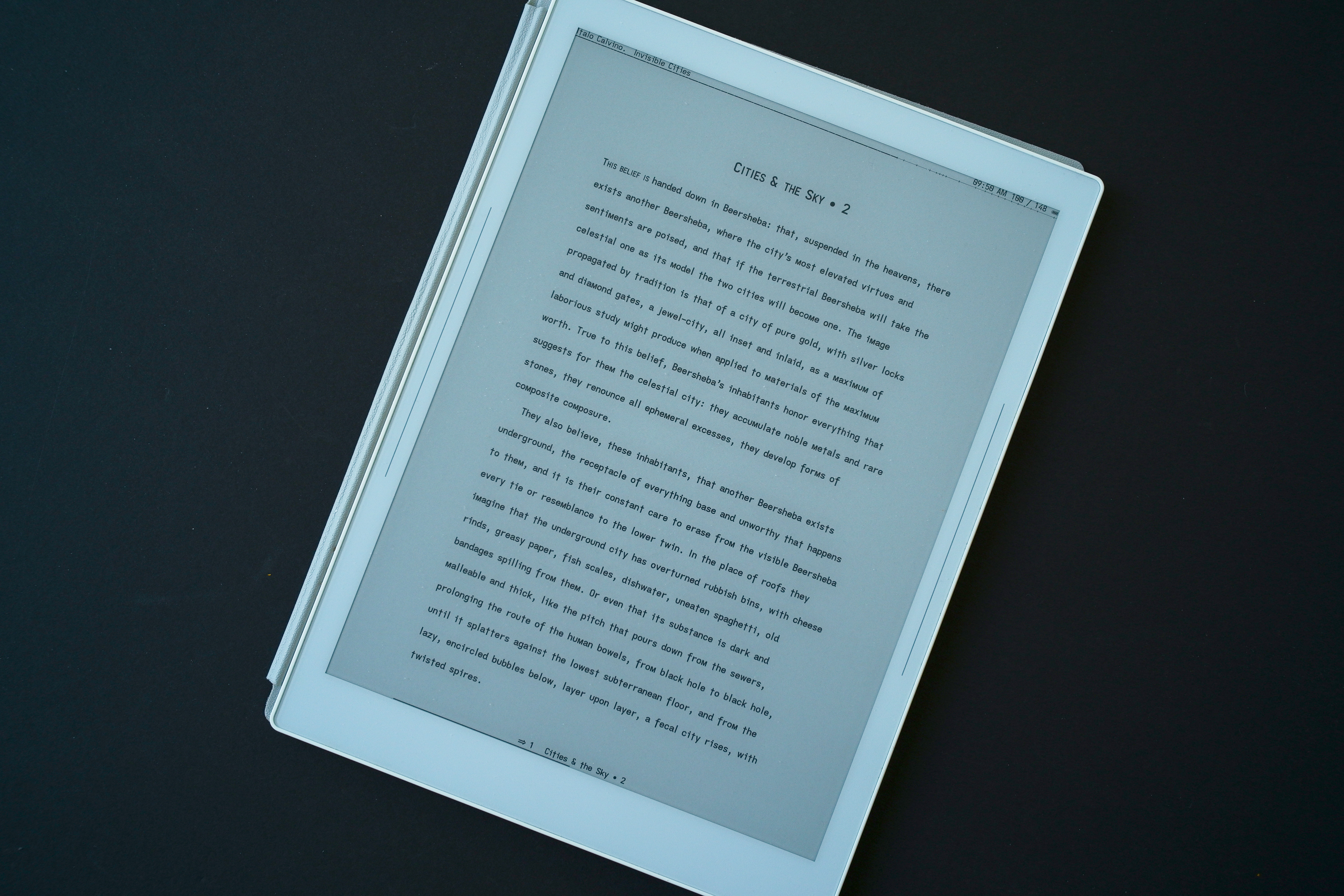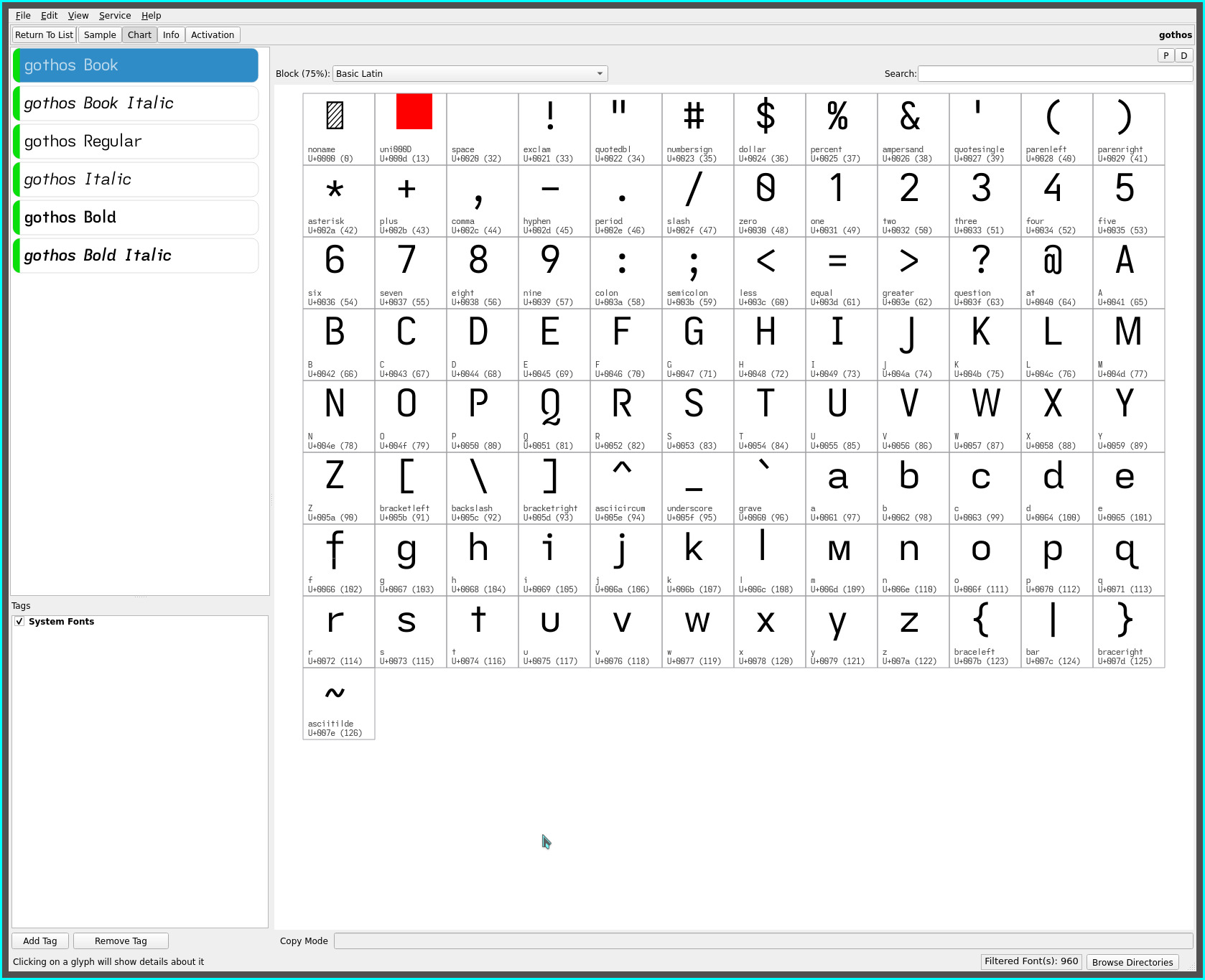gotham font
a variant of the singspiel font, the gotham font is an experimental typeface which continues this site’s focus on the improved legibility and readability of its dyslexia focused fonts.

straight m
With yet another simple unconventional glyph shape change—replacing the familiar rounded double arch (shoulder) lower case m (singspiel’s earless-corner, notwithstanding) with an angular flat-bottomed m (very much a small cap)—the lower case m now stands out more distinctly from the very common shouldered n..

This unconventional glyph choice is a striking contrast—despite the commonality of matching x-height characters to their capitals with the c o s u v w x and z—to the pervasive rounded arched m. Its vertical sides and angled strokes (legs) render—despite its narrower cell width—more distinctly than the familiar triple stemmed arched glyph (which becomes apparent with words containing both the m and n, and even more so when doublets of either letters are present).
The arched m does visually “flow” more pleasingly (personal aesthetic) than the angular straight m, though, the latter does offset this loss with its tighter cell width and added non-mirrored distinctiveness froM the eared n.
As for the font’s name, the straight m compliments the font’s unique ascenders (and descenders), adding to the printed line’s “skyline”. “Goth”ic emphasizes its sans serif leanings (albeit, subtly tuned for dyslexia and visual flow)—it remains an exceptionally “clean” typeface.
cap height cross t and extended f
also differing from the singspiel font are stem length reductions to the cross t and extended f.
The stem length of the cross t is reduced to the (total) cap height of the font which subtly shortens the descender while maintaining the balanced proportions of the original glyph. Similarly, the stem length of the extended f is reduced to between the base of the new cross t and its original y descender depth, providing a less accented and more naturally proportioned glyph shape (to these eyes).
The shortened f and t descenders produce a subtle tonal shift from singspiel’s lyrical form to a more Gothic or architectural presentation.
gothos font
for maximum dyslexic readability, the serifed capital I and the (re-introduced) hook-toothed capital G are available with the gothos font. This font also conforms to more standard glyph outlines with the regular non-extended cross t and the fully extended f (though, the extended cap height of the f and lower case l remain)..

IMO the gotham and gothos fonts improve even upon their predecessors for dyslexic readability—the singspiel/songspiel and grotesque/groteske fonts—with the addition of the angular straight m.
The serifed and hook-toothed capitals of the gothos font along with its non-mirrored glyph sets elevate its dyslexic legibility (beyond even such fonts as the Atkinson Hyperlegible font, IMO) while adding the relaxed visual reading cadence of the non-kerned (pseudo monospaced) glyph spacing of the fonts representative of this site. All while keeping with an overall clean sans serif typeface feel.
‧ ‧ • ‧ ‧
The gotham font has found its place in my reading (font) rotation—notably with the singspiel font—offering a visual change up for these eyes and, importantly, maintaining a similar word page density for the KOReader layout i impose on my content consumption.
The more i read with it, the more this typeface comes to the fore. Only with words containing a leading m did the glyph shape initially feel odd (against a lifetime’s familiarity to the arched m). Within words, the glyph visually renders naturally with increased legibility (especially with words also containing a n or a doublet).
The varying descender depths of gotham’s glyphs is in contrast to the standard fixed y descender depth of traditional fonts—not to mention, the extended cap height of the lower case f and l. The descending f is not common and the descending cross t is unique to this site’s fonts (AFAIA). Such stem length variations render best on higher resolution displays, such as 300 PPI eink panels.
As always, YMMV.
repos
This font may be found on OneDrive.